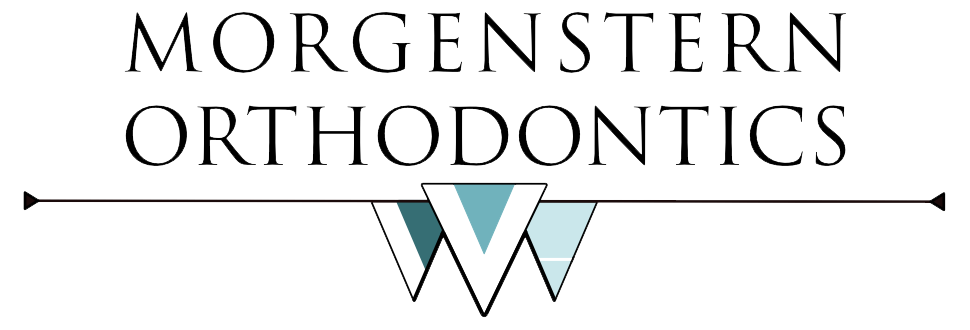ORTHODONTIC Treatment For Children
Early Orthodontic Treatment in Chapel Hill, NC
Who needs early braces? Early treatment, also called interceptive or phase I treatment is when a child has orthodontic treatment while some baby teeth are still present. A majority of orthodontic problems are best treated after all permanent teeth have come in. But early treatment is needed when a patient has an issue that could become more serious over time if left untreated, that could be more difficult to correct at an older age, or that may prevent permanent teeth from growing in properly. If your child is a candidate for early orthodontic treatment in Chapel Hill or Pittsboro, NC, Dr. Morgenstern will outline the best course of action for Phase I treatment and future Phase II.
Children Should Have An Orthodontic Exam By Age 7!
Orthodontic treatment can improve smiles at any age but the American Association of Orthodontists recommends an orthodontic evaluation by age 7 to evaluate the bite and monitor for proper eruption of all permanent teeth. Why so early? There are sometimes very simple steps that can be done before any braces to prevent future problems. This gives Dr. Morgenstern an opportunity to fully evaluate your child’s teeth and bite while they are still growing. She will provide early treatment, if necessary, and it allows us to monitor children as they grow so treatment at a later age can be started at the ideal time.
What An Orthodontist Will Evaluate At A Young Age
At your child’s first visit, Dr. Morgenstern will complete a thorough evaluation and identify potential orthodontic issues such as:
Early or late loss of baby teeth
Crowding, misplaced or blocked out permanent teeth
Missing or extra permanent teeth
Large overbites, underbites or openbites
Crossbite of back and front teeth
Protruding or flared teeth
Disproportionate jaw growth
Oral habits such as thumb sucking
What Is Early Phase I Orthodontic Treatment And Who Needs It?
Phase I or early treatment is often completed between ages 7-9 years old when some baby teeth are still present. Early treatment focuses on correcting specific problems related to growth of the jaws and permanent teeth growing in. This phase of treatment can prevent more serious problems from developing and can make a later phase of treatment less complicated and shorter. Some concerns are more easily treated at a young age when children are still growing and may not be able to be fully corrected after growth is complete.
Phase I treatment provides the ability to direct jaw growth in a favorable way that will make space for permanent teeth to properly erupt as well as set a solid foundation for a good bite. An upper or lower jaw that is growing too much or not enough (often seen as an underbite or overbite) can often benefit from early orthodontic treatment. This early correction can prevent dental trauma, abnormal wear on the teeth, potentially allow patients to avoid later removal of permanent teeth or even jaw surgery.
Not every child needs early braces or phase I treatment. At our office you will never be pressured into or sold treatment that is not needed. Dr. Morgenstern is conservative in her approach to phase I treatment and will recommend it only when there is a definite benefit versus waiting until your child is older. The treatment time for Phase I treatment is usually between 6-15 months. After this type of treatment our patients then wear retainers and Dr. Morgenstern continues to monitor their growth until they’re ready for phase II. A majority of patients who need phase I treatment will also need phase II treatment once all their permanent teeth erupt.
Why Put Braces On Baby Teeth?
Many parents ask about the value of putting braces on baby teeth, given that baby teeth will eventually fall out. Most patients will not need to start treatment while they still have baby teeth, however, there are situations where an orthodontist will place brackets on some baby teeth as part of early orthodontic treatment.
Your orthodontist can use the baby teeth as “anchor teeth” to close spaces, reduce crowding, or help correct a crossbite. Baby teeth function just like permanent teeth in regards to tooth movement.
The roots on baby teeth are not as long as their permanent replacements and your orthodontist will keep the moving forces low so we can safely move these teeth. There is very little risk of damaging the growing permanent teeth underneath and early treatment often works to create adequate space for permanent teeth to grow in. Overall, putting braces on baby teeth is a great tool that is used often during early orthodontic treatment.
What Is “Phase II” Braces?
The goal of Phase II treatment is to position all the permanent teeth to maximize their function and appearance. This is best accomplished with full braces or Invisalign around ages 11-14. Phase II usually lasts 12-24 months depending on severity. Oftentimes, patients who have phase I have a shorter or easier treatment during phase II. Early treatment in Phase I could also lead to a shorter Phase II. This is especially important to many patients as they enter their teenage years.
Request a consultation and learn more about early orthodontic treatment!
To schedule your child’s consultation with Dr. Morgenstern, a specialist in orthodontics, contact us through our website or call us.
We provide care to patients in Chapel Hill, Pittsboro, Carrboro, Durham, Hillsborough, Siler City, and surrounding areas.


